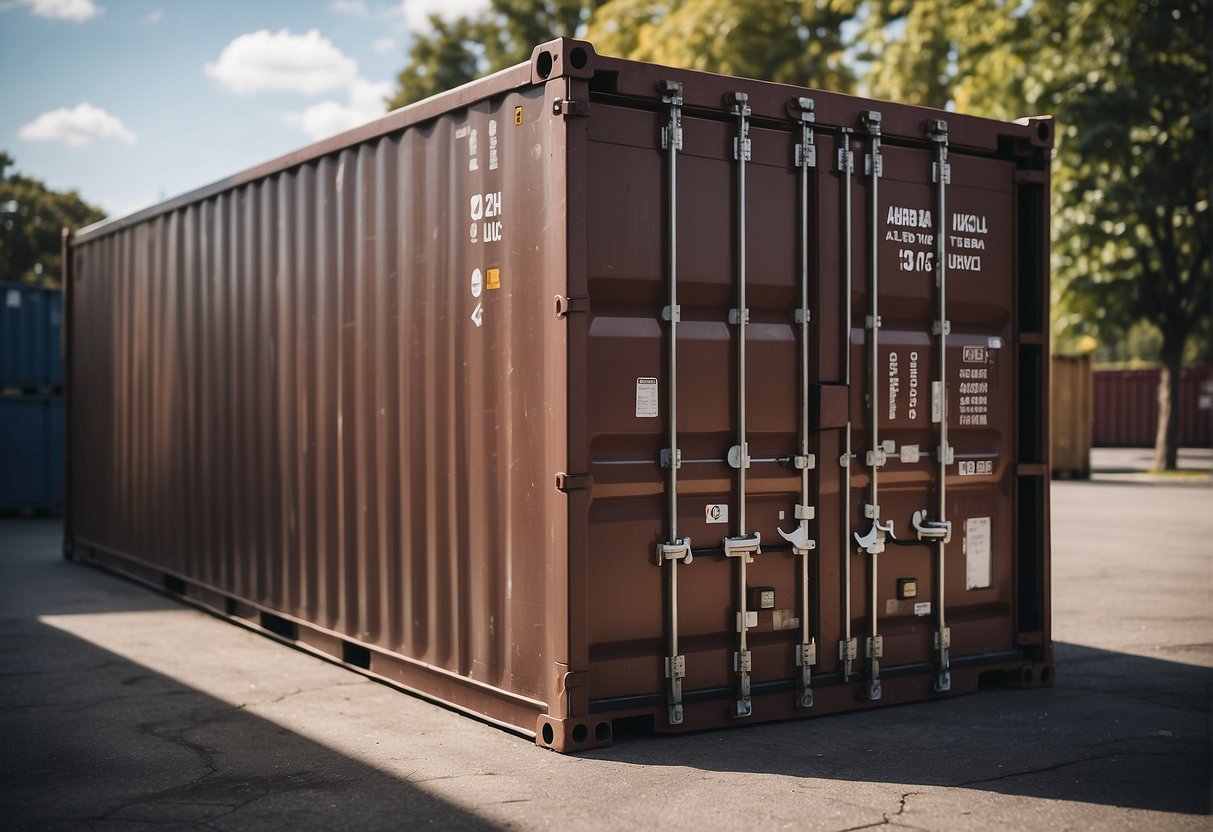Understanding the weight of a 20-foot shipping container is important for logistics, safety, and efficiency in the transport industry. A standard 20-foot container, also known as a dry van, is one of the most common types used in ocean freight.
Empty, these containers have a tare weight, which refers to the weight of the container without any cargo inside. It is essential for shippers to know both the tare weight and the maximum gross weight, which is the combined weight of the container and its cargo, to avoid overloading and potential hazards.

The tare weight of a 20-foot shipping container typically averages around 5,071 pounds. However, the maximum gross weight—the weight of the container when fully loaded with cargo—can reach up to 55,126 pounds.
These figures are crucial for determining the appropriate shipping method and ensuring that the transportation vehicle, such as a cargo ship or a truck, can handle the weight.
Additional considerations include the weight distribution within the container and the weight limits of the roads or infrastructure it will travel on, all of which play a role in the planning and execution of cargo transport.
Specifications of a 20 Foot Shipping Container
Understanding the weight specifications of a 20-foot shipping container is essential for logistics, ensuring compliance with transportation regulations and efficient space planning.
Tare Weight
The tare weight is the empty weight of the container without any cargo. A standard 20-foot container typically has a tare weight of approximately 5,070 lbs (2,300 kg).
Payload Capacity
The payload capacity refers to the maximum weight of cargo that can be loaded into the container. The payload capacity for a 20-foot container is up to 55,126.9 lbs (25,000 kg), although practical loading limits may be lower due to shipping restrictions or the nature of the goods.
Gross Weight
Gross weight is the total weight of the container combined with its maximum payload. A typical 20-foot shipping container’s gross weight should not exceed 60,197 lbs (27,305 kg), encompassing both the tare weight and the payload capacity.
Factors Influencing the Weight of a 20 Foot Shipping Container
The weight of a 20-foot shipping container can be affected by several factors, each playing a pivotal role in determining its tare and gross weight.
Material Composition
The primary material used in the construction of a shipping container is steel. However, the type and thickness of the steel can vary, which in turn affects the container’s weight.
Containers made from cor-ten steel are often heavier due to the increased durability and resistance to harsh weather conditions. Some containers might integrate aluminum to reduce weight, but this is less common for standard containers designed for heavy-duty use.
Container Condition
The condition of a container contributes to its weight. A new container typically has a consistent tare weight as provided by the manufacturer. However, as containers age, they may undergo repairs that include additional welding or the addition of new metal patches, potentially increasing their tare weight. Containers that have been damaged and subsequently repaired are often heavier than their undamaged counterparts.
Modifications and Customizations
Modifications for specific purposes, such as modification into living spaces or office units, will invariably alter a container’s weight.
The addition of insulation, interior walls, windows, and doors can increase the overall weight. Conversely, cutting out sections for glazing or removing parts of the steel framework for other adjustments might decrease it.
Each customization must be factored into the overall weight calculations, especially when considering transportation and handling logistics.
